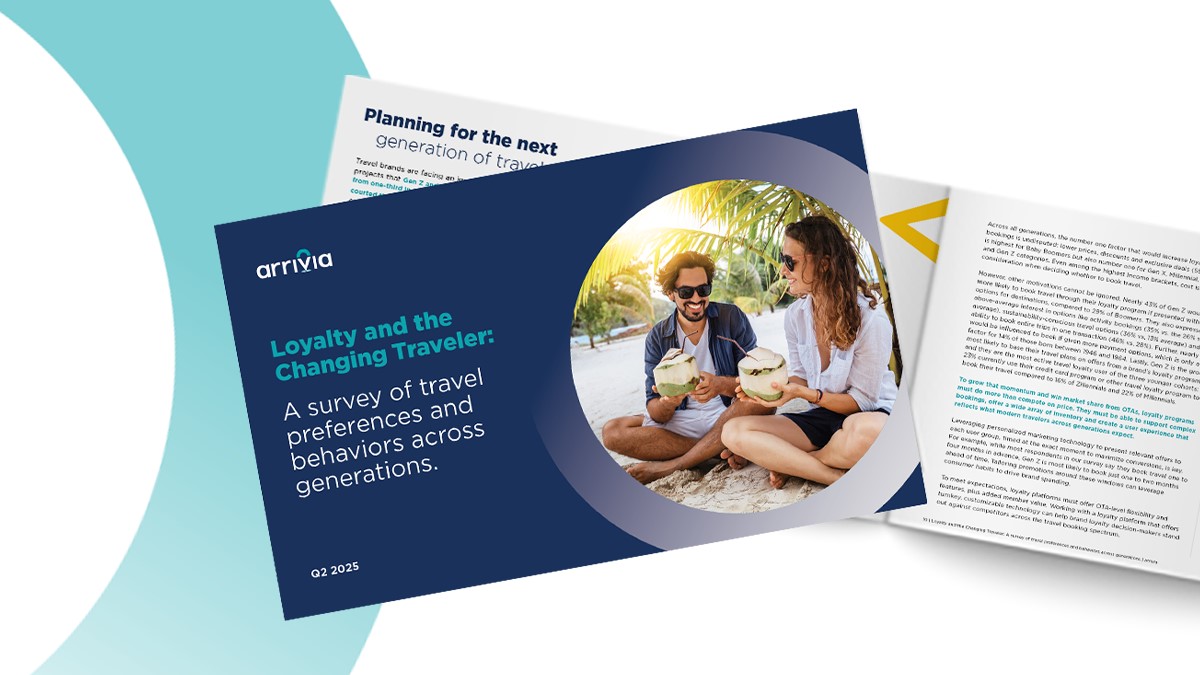Travel is back. Of course, restrictions are still in place across many regions and sectors, and the business travel market looks like it’s in for a more gradual recovery. But even casual observers recognize that travel demand is booming compared to the pandemic-era stagnation. More than 80% of US respondents to a TripAdvisor survey plan to take at least one overnight leisure trip this year, and 34% are planning at least three trips. Our own US traveler survey revealed similar sentiment; 80% of travelers feel “very comfortable” traveling by air right now, compared to 19% who are apprehensive and just 1% who aren’t comfortable flying at all amid ongoing COVID fears.
With demand for travel burgeoning, the appeal and perceived value of travel rewards is also on the rise. For financial services companies looking to make the most of the travel rebound, the quality, utility and usability of their travel loyalty programs will play a central role in attracting new loyalty members, engaging current members and incentivizing them to spend and redeem within their travel loyalty ecosystem.
Why? Because post-pandemic travelers are primarily leisure travelers. Seventy percent of Americans are planning a leisure vacation in the next six months, while business travel is still 50% below pre-COVID levels. And leisure travelers tend to gravitate towards travel loyalty programs that offer the most value (vacationers are “price-sensitive” compared to their business travel counterparts, according to McKinsey), as well as robust booking, earning, and redemption capabilities.
Safety remains top-of-mind for these travelers and likely will continue to be in the short term. But as safety concerns abate, financial services brands can capitalize on the leisure travel demand surge by offering more options and value.
The Persistent Post-Pandemic Preoccupation: Safety
While financial services brands have little influence over how safe their members or travelers feel, they must recognize that safety is still the dominant consideration for many US travelers and a significant percentage of global travelers. Forty percent of US travelers say concern about their own safety, the safety of others, and worries about COVID-19 variants are important or extremely important considerations that might prevent them from traveling. The recent rise of the Delta variant has also prompted 51% of Americans to say they’re less interested in traveling right now.
Sentiment is just one part of the safety calculation for travelers, however. There are logistical safety considerations that must also be confronted. A separate survey by GlobalData found that the main obstacles facing travel’s recovery are quarantine requirements (57%), travel restrictions (55%), and followed by the fear of contracting COVID-19 (51%). The fourth barrier was financial concerns (29%), leading to an area of travel recovery in which financial services brands can flex their distinct advantage: delivering value.
It’s All About Value, Always
Leisure travelers, traditionally, are more value-conscious than business travelers. In the post-pandemic environment, expect this to be even more pronounced. The travel industry’s struggles in 2020 conditioned leisure travelers to expect steep discounts; meeting this expectation for value through the recovery will be critical for financial services brands and their travel loyalty programs.
According to the American Express 2021 Global Travel Trends report, 63% of consumers say they are saving up credit card points to go on a vacation once they feel comfortable traveling again. The same survey indicated that a third of consumers will likely use more travel credits or points to pay for all or part of a trip this year than pre-pandemic times. Among the travelers that participated in our July 2021 survey, 16% said the ability to earn or redeem miles was their most important air travel consideration, behind only the price of the airfare itself.
In short, post-pandemic leisure travelers are turning to their travel rewards programs for value.
So what should financial services companies do to capture more of the booming leisure travel market? Accenture suggests that loyalty programs should be recentered around the leisure traveler, recognize the distinct segments within the leisure travel audience, and focus on both the functional and emotional components of loyalty. That means offering high-value discounts, as well as easy and transparent earning and redemption options. It also means creating interactions and experiences that demonstrate that the brand understands the things leisure traveler cares about and wants their trust.
Except When It’s All About Having Options
Another way the post-pandemic leisure traveler is different from the pre-COVID business traveler? Trip planning is more important to their process than ever. To capture more of those customers’ travel spend within their own loyalty ecosystem, financial services brands must provide all the options that travelers need and may want to explore.
The travel rewards programs of most financial services brands will offer the big three options – air, hotel and car rental. Few, however, offer the ability to book cruises, experiences, or alternative lodging. To get the most out of the leisure-driven travel recovery, financial services companies should create as many booking, earning and redemption options as possible to meet the needs of the broadest segment of potential travelers. They’ll distinguish themselves from competing travel rewards offerings, too.
AdvertisingWeek suggests that travel loyalty programs can deliver more value by creating a vertical experience, including transport, stays and activities. They can enable the planning experience that leisure travelers prefer by offering expanded travel content, including activities, experiences and packages. That ultimately delivers more value to the member or consumer by filling gaps in or around the travel experience.
The Role Financial Services Brands Play
Beyond accommodating safety considerations, delivering value and providing expanded earning, redemption and booking options, what specifically can financial services brands do to embrace the travel rebound?
Here are four recommendations:
1. Be a one-stop-shop: offer the options leisure travelers need to book their entire trip through the travel rewards program
2. Create value at every turn: expand points redemption options and leverage closed user group pricing to make discounts stand out amid rising publicly available prices
3. Focus on experiences: not only core travel components, but also the user’s booking experience, and how everything from planning to purchasing to departing works together
4. Market effectively across the ecosystem: demand is high, but not every customer segment values the same things. Invest in technology and partnerships that can help target, reward and engage specific high-value customer groups.
These recommendations are designed to help financial services brands pivot their loyalty and rewards programs toward the needs of the leisure traveler that’s driving the global travel rebound. By tailoring their loyalty approach to clearly delivering immediate value, as well as the planning experience and booking options leisure travelers crave, those companies can start closing the gap left by the persistent low level of business travel.
Most importantly, with these capabilities, financial services companies can turn their loyalty programs into growth engines and capitalize on the ongoing travel recovery that’s clearly ahead.
Learn how arrivia can help your financial services brand safely provide more options and value to travel loyalty members and drive growth and revenue through the travel rebound.



